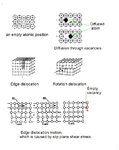nitin.maurya1
Junior Member level 2
- Joined
- Nov 12, 2011
- Messages
- 22
- Helped
- 0
- Reputation
- 0
- Reaction score
- 0
- Trophy points
- 1,281
- Location
- Varanasi, India
- Activity points
- 1,438
why there is no diffusion exist in metals?
Follow along with the video below to see how to install our site as a web app on your home screen.
Note: This feature may not be available in some browsers.

Source: Semiconductor - Wikipedia, the free encyclopedia
The effective mass is important as it affects many of the electrical properties of the semiconductor, such as the electron or hole mobility, which in turn influences the diffusivity of the charge carriers and the electrical conductivity of the semiconductor.